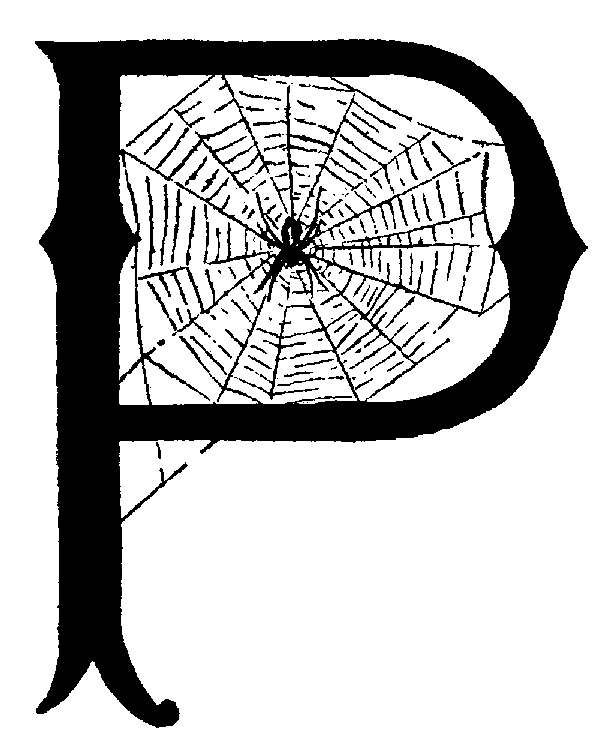



|
 ROTECTING her eggs from the vicissitudes of
the weather seems to be the spider mother's
chief care; though at the same time and by
the same means, she protects them from the
attacks of predacious insects. Many of the
species make silken egg-sacs, which are often
elaborate in construction, and are carefully
placed in protected situations.
ROTECTING her eggs from the vicissitudes of
the weather seems to be the spider mother's
chief care; though at the same time and by
the same means, she protects them from the
attacks of predacious insects. Many of the
species make silken egg-sacs, which are often
elaborate in construction, and are carefully
placed in protected situations.
Often a little silvery disk may be seen attached to a stone in a field. It resembles a circular lichen on the stone, but if it is examined it is found to consist of an upper, very smooth, waterproof coat, while below is a soft, downy nest, completely enfolding the spider's eggs.
![[Illustration]](http://www.gatewaytotheclassics.com/gold/books/comstock/invertebrates/comstock_invertebrates_zpage487.gif)
A wolf-spider carrying her egg-sac. |
The egg-sacs of the cobweb weavers are often found suspended in their webs. One of the large orb-weavers makes a very remarkable nest, which it attaches to the branches of weeds or shrubs. This sac is about as large as a hickory nut, and opens like a vase at the top. It is very securely suspended by many strong threads of silk, so that the blasts of winter cannot tear it loose. The outside is shining and waterproof, while inside it has a fit lining for a spiderling cradle.
Dr. Burt G. Wilder studied the development of the inmates of one of these nests by cutting open different nests at different periods of the winter. In the autumn, the nest contained five hundred or more eggs. These eggs hatched in early winter but it seemed foreordained that some of the little spiders were born for food for their stronger brethren. They seemed resigned to their fate, for when one of these victims was seized by its cannibalistic brother, it curled up its legs and submitted meekly. The result of this process was that, out of the five hundred little spiders hatched from the eggs, only a few healthy and apparently happy young spiders emerged from the nest in the spring, sustained by the nourishment afforded them by their own family, and fitted for their life in the outside world.
Some spiders make a nest for their eggs within folded leaves, and some build them in crevices of rocks and boards.
The running spiders, which are the large ones found under stones, make globular egg-sacs; the mother spider drags after her this egg-sac attached to her spinnerets; the young, when they hatch, climb upon their mother's back, and there remain for a time.
Leading thought—The spider mothers have many interesting ways of protecting their eggs, which they envelop in silken sacs and place in safety.
Method—Ask the pupils to bring in all the spider egg-sacs that they can find. Keep some of them unopened, and open others of the same kind, and thus discover how many eggs are in the sac, and how many spiderlings come out. This is a good lesson for September and October.
Observations—
1. In what situation did you find the nest? How was it protected from rain and snow? To what was it attached?
2. Of what texture is the outside of the sac? Is the outside made of waterproof silk? What is the texture of the lining?
3. How many eggs in this sac? What is the color of the eggs? When do the spiderlings hatch? Do as many spiders come out of the sac as there were eggs? Why is this?
![[Illustration]](http://www.gatewaytotheclassics.com/gold/books/comstock/invertebrates/comstock_invertebrates_zpage488.gif)
The egg-sac of the large, black and yellow garden-spider suspended for the winter in a branch of golden-rod. Photo by Slingerland. |